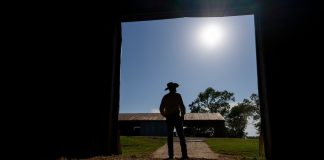E.O. Siecke Forest acquired by Texas A&M Forest Service in 1924
Visitors and families gathered Oct. 18 at the E.O. Siecke State Forest in Newton County to commemorate its centennial year.
Texas A&M Forest Service began managing the site in 1924 and named it State Forest No. 1. In 1951, it was dedicated and renamed to the E.O. Siecke State Forest to recognize the contributions of Eric O. Siecke, who served as the agency’s second director and state forester.
During the celebration, attendees were able to visit with over 20 exhibitors, including natural resource and first responder partners, as well as experience hands-on activities. Immersive tours were also offered where participants learned about its history, pioneering silvicultural research and practices, and the original fire lookout tower.
The Siecke State Forest centennial event was the third and final event hosted by Texas A&M Forest Service in a year-long state forest centennial recognition that included centennial celebrations at the W.G. Jones State Forest and I.D. Fairchild State Forest.
“The Siecke State Forest has been home to many firsts in Texas forestry, starting with its acquisition and management by our agency,” said Jake Donellan, Texas A&M Forest Service field operations chief. “Our centennial events have provided a glimpse into forestry research and progress from across 10 decades, and we hope Texans will continue to enjoy their legacy for generations to come.”
Management as a state forest
Texas A&M Forest Service owns and manages five state forests and two arboretums, which serve as demonstration forests and educational classrooms that welcome thousands of visitors and horseback riders annually.
State forests are working forests cared for with sound, scientific forest management. Essential silvicultural research and outreach take place on state forests, often in collaboration with natural resource partners.
At the time it was first acquired, much of the Siecke State Forest property was cutover, or already harvested, and severely burned. Immediately following its acquisition of the forest, agency foresters began reforestation efforts, which led to impactful forestry developments and a positive regional economic impact.
Through intensive silvicultural efforts, the first operational planting of slash pine in Texas was established on the forest due to its rapid growth, survival and resistance to tip-moth damage. The rise in success of slash pine plantations in the forest and throughout East Texas led to the construction of the Southland Paper Mill — the first southern yellow pine newsprint mill — in Lufkin.
The first fire tower in Texas, standing at 80 feet, was constructed in the forest in 1926 and was a critical asset for lookout men and women to spot and locate forest fires from rising smoke. During its first year in use, 135 fires were detected from this tower.
Today, the 1,700-acre forest and its remnants, including the first steel fire tower and pine plantation, still stand as a testament to a century-long beginning for forestry research and advancement in Texas.








